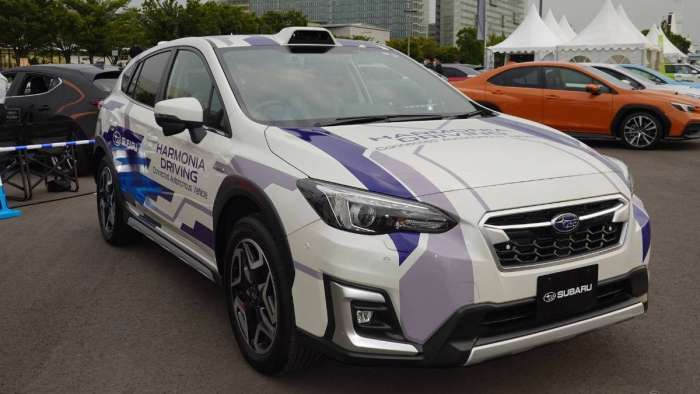ATTI speaks to David Oberman, vice president, Asia, at Innoviz Technologies, about how Subaru is testing lidar in the application of its EyeSight Driver Assist Technology
Since 2020, Japanese OEM Subaru has employed InnovizOne lidar technology in the testing and development of an advanced version of its EyeSight Driver Assist Technology, with it outfitted to an automated test vehicle.
The ADAS currently consists of a set of cameras to monitor traffic movement, optimize cruise control, and warn drivers if they swerve out of lane boundaries. To date, the tech has been camera-heavy; Subaru is exploring how lidar can advance the performance of the EyeSight system.
The Harmonia Drive test vehicle, as it is known, is equipped with six additional cameras (eight cameras total) around the vehicle, and an InnovizOne lidar sensor integrated into the roofline of the vehicle.
“While the multi-camera system captures the vehicle’s surroundings in 2D, including the color recognition of traffic signals, InnovizOne adds critical sensor redundancy to ensure driver and pedestrian safety, as well as confidence in higher levels of automated driving,” explains David Oberman, vice president, Asia, at Innoviz Technologies.
Almost every manufacturer today adopts lidar, firmly placing the technology as the safety standard for ADAS in 2023 and beyond. Oberman says the lidar delivers numerous benefits in this specific application: “InnovizOne lidar complements Subaru’s camera-based EyeSight system by delivering rich 3D point cloud of all obstacles surrounding the vehicle. Unlike cameras, lidar works independent of sunlight so it can detect all obstacles in low-light and adverse weather conditions, such as rain and fog.”
Oberman continues, “Lidar ‘sees’ better than the human eye and can support camera blindspots. For example, when snow gathers on the side of the road, the camera looks at the piles of snow and all it sees is just snow. The lidar is able to detect the pile that’s close and then another pile that’s farther away. The two piles are treated as two objects.”
Three Crosstrek test vehicles equipped with Innoviz lidar have been publicly displayed by Subaru. These vehicles are being used for year-round analysis in various conditions, including in very cold locations in Japan where it can reach temperatures as low as -30°C and where there is a lot of snow. Subaru is assessing route tracking functionality with a high-precision map, and whether the test vehicle can detect pedestrians (as well as other obstacles in the roadway) and stop properly.
 “Subaru has not specifically mentioned if they’re testing at Level 2++ or Level 3, but it is obvious that they are at this kind of level. Dissimilar to American or European OEMs, some leading Japanese OEMs prefer to discuss incremental safety improvements in Level 2 – Level 2++ – rather than calling their systems Level 3,” Oberman notes.
“Subaru has not specifically mentioned if they’re testing at Level 2++ or Level 3, but it is obvious that they are at this kind of level. Dissimilar to American or European OEMs, some leading Japanese OEMs prefer to discuss incremental safety improvements in Level 2 – Level 2++ – rather than calling their systems Level 3,” Oberman notes.
“Subaru first exhibited lidar alongside its camera system about two years ago. The InnovizOne lidar was used as a part of a government program to test a variety of autonomous vehicle technology in Tokyo. Most recently, Subaru completed real-world safety demonstrations at the SIP-Automated Driving for Universal Services exhibition and test drive event in Tokyo, Japan, held in September 2022.”


